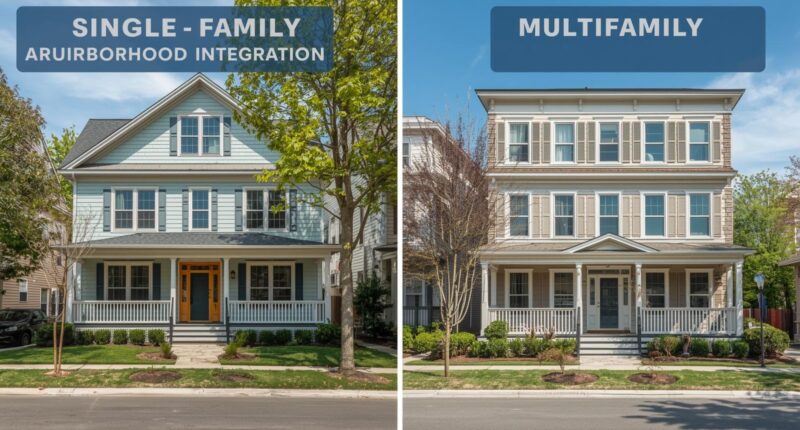Single-Family vs. Multi-Family Homes: Which Is Better?
Introduction
When it comes to real estate investing or buying a property for personal use, one of the most common questions is: Should I buy a single-family home or a multi-family home?
Both types of homes have unique advantages and drawbacks. Choosing the right one depends on your financial goals, lifestyle preferences, and investment strategy. In this article, we’ll break down the key differences, compare the pros and cons, and help you decide which type of property is best for you.
What Are Single-Family Homes?
A single-family home is a standalone residential property built for one household. It typically includes a private yard, garage, and no shared walls.
Key features of single-family homes:
-
One household occupancy
-
More privacy and independence
-
Often located in suburban or residential areas
-
Higher appreciation potential in certain markets
What Are Multi-Family Homes?
Multi-family homes are buildings designed to house multiple families in separate units, such as duplexes, triplexes, or apartment complexes.
Key features of multi-family homes:
-
Two or more units under one property title
-
Rental income opportunities
-
Shared walls or facilities
-
Often located in urban or high-demand areas
👉 External Resource: Investopedia’s Guide to Real Estate Property Types
Single-Family Homes: Pros and Cons
Pros
-
Greater privacy and independence
-
Easier to sell (higher demand among families)
-
Lower tenant management if used as investment property
-
Often come with larger yards and outdoor spaces
Cons
-
Limited rental income (only one tenant/household)
-
Higher cost per unit compared to multi-family
-
Vacancy means 100% income loss if used as rental
Multi-Family Homes: Pros and Cons
Pros
-
Multiple rental income streams
-
Lower vacancy risk (one empty unit doesn’t mean zero income)
-
Great for building long-term wealth and passive income
-
Often located in areas with high rental demand
Cons
-
More expensive upfront cost
-
Requires property management skills
-
Shared walls may reduce privacy
-
Can be harder to sell compared to single-family homes
Table: Comparison of Single-Family vs. Multi-Family Homes
| Feature | Single-Family Homes | Multi-Family Homes |
|---|---|---|
| Privacy | High | Medium to Low |
| Rental Income Potential | Low (1 tenant) | High (multiple tenants) |
| Maintenance | Lower | Higher |
| Vacancy Risk | High (100% loss) | Lower (partial loss) |
| Resale Value | High demand | Moderate demand |
| Initial Investment Cost | Lower | Higher |
Which Homes Are Better for Investors?
If your goal is long-term rental income, multi-family homes generally provide stronger returns. With multiple tenants, you can spread risk and maximize cash flow.
On the other hand, if you want capital appreciation and easy resale, single-family homes are often the safer choice. They attract a wider range of buyers and typically sell faster.
👉 Internal Link: Check out our guide on The Best Time of Year to Sell Your Home.
Lifestyle Considerations
Choosing between single-family and multi-family homes isn’t only about money—it’s also about lifestyle.
-
Single-family homes are better for families seeking privacy and space.
-
Multi-family homes are ideal for investors who want to live in one unit and rent out the others, effectively reducing their mortgage burden.
Final Thoughts
So, which is better: single-family or multi-family homes? The answer depends on your goals.
-
If you’re looking for privacy, long-term appreciation, and a place to raise a family → Single-Family Homes are best.
-
If you’re aiming for rental income, wealth building, and multi-stream cash flow → Multi-Family Homes are better.
The smartest approach is to evaluate your financial situation, investment strategy, and personal lifestyle before making a decision. Both property types can be excellent assets when chosen carefully.









